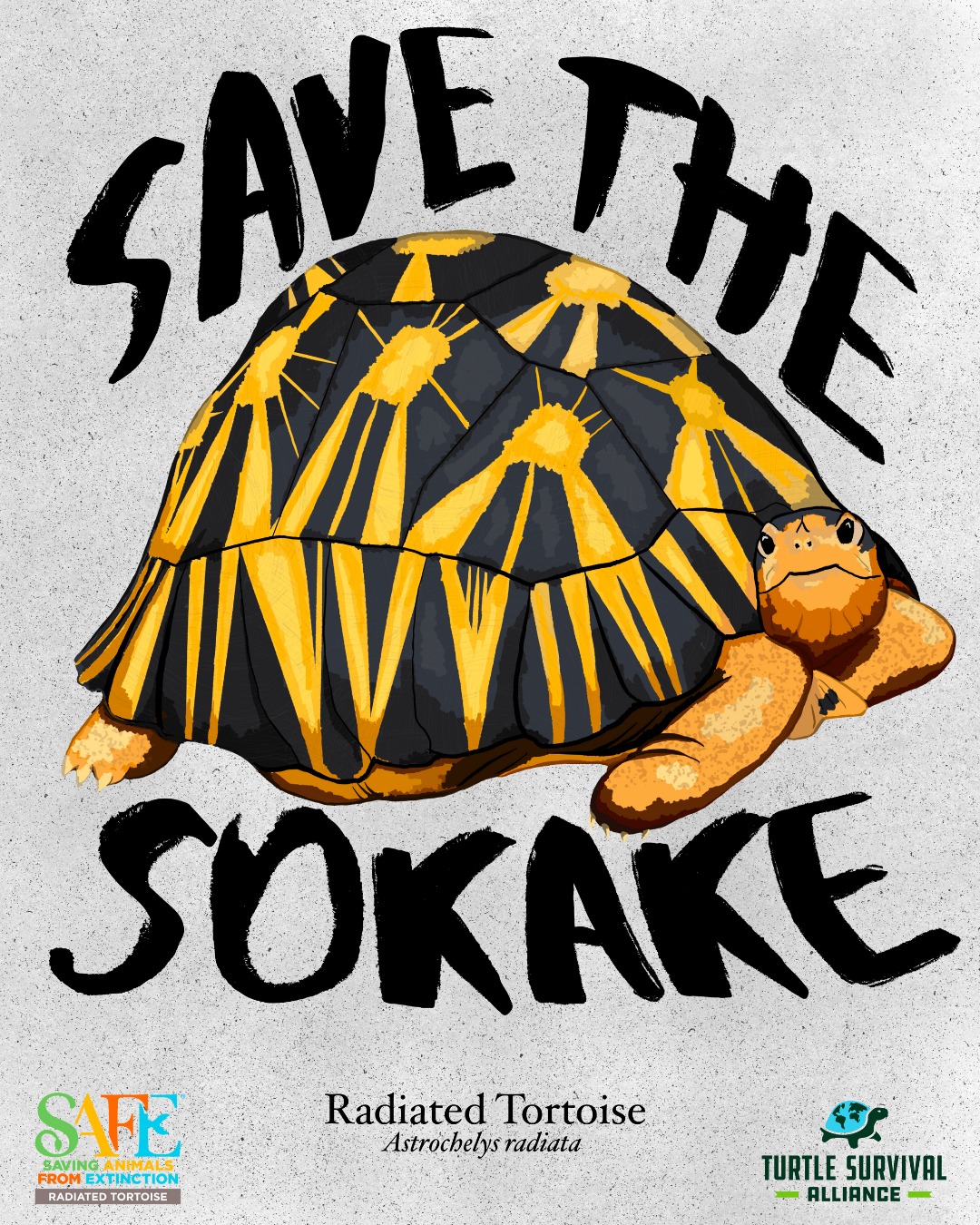- Introduction to the Radiated Tortoise, known as Sokake in Madagascar, and its distinct features and behavior.
- The conservation challenges facing the Radiated Tortoise due to illegal poaching, habitat loss, and environmental threats.
- Efforts by TSA Madagascar in conservation and rehabilitation, highlighting the recent challenges and successes.
- The impact of climate events on conservation efforts and how they affect the habitat and direct actions.
- The role of collaborations, such as AZA’s SAFE program and artist contributions, in raising awareness and supporting the conservation initiatives.
The Radiated Tortoise, or Sokake in Madagascar, stands as a symbol of the island’s unique biodiversity. Known scientifically as Astrochelys radiata, this tortoise captivates with its star-patterned shell, a form of natural artistry. Native to the spiny forests of southern Madagascar, the Sokake thrives in semi-arid environments, feeding predominantly on grasses, succulents, and fruits. This herbivorous diet shapes the ecosystem, aiding in seed dispersal and maintaining plant diversity.
Characterized by their distinctive shells, Radiated Tortoises are medium-sized, typically weighing around 15 kilograms. Their high-domed carapaces, adorned with striking radiating yellow lines, serve as protection against predators and extreme temperatures. Behaviorally, these tortoises are day-active and exhibit strong territorial instincts, often engaging in social interactions that include head bobbing and shell ramming.
Conservation challenges for the Radiated Tortoise are severe. Illegal poaching for the exotic pet trade and bushmeat markets has drastically reduced their numbers. Additionally, habitat loss from agricultural expansion and deforestation furthers their decline. The inclusion of Radiated Tortoises in CITES Appendix I highlights their critical status, limiting international trade to protect the species.
TSA Madagascar spearheads extensive conservation efforts against these mounting threats. Establishing protected areas and engaging in community outreach programs are central to their strategy. Education campaigns focus on reducing local hunting and raising awareness about the tortoise’s endangered status. In recent months, multiple large-scale confiscations of poached tortoises have underscored the urgency of these efforts.
Success in conservation also requires resilience against environmental challenges, such as recent flooding from three tropical storms that hit Madagascar. These climate events threatened both the habitat and infrastructure essential for conservation work. The Lavavolo Tortoise Center, a critical site for rescue and rehabilitation, faced substantial damage, with rebuilding efforts now underway to secure housing for over 11,000 tortoises.
Collaborations with international organizations amplify conservation impacts. The Association of Zoos and Aquariums’ SAFE Radiated Tortoise program, for instance, plays an instrumental role in supporting TSA Madagascar. By facilitating international partnerships and funding, SAFE aids in rebuilding and enhancing conservation capacity. Unique to this collaboration are the artistic contributions, like those from Aster Gridley, whose illustrations have fostered new waves of public engagement and fundraising.
Merchandise sales, driven by these art initiatives, exemplify creative ways to bolster conservation funding. Each purchase directly contributes to safeguarding the Sokake, illustrating the power of blending art and conservation. Through public awareness and sustained efforts, these initiatives aim to stabilize and ultimately grow Radiated Tortoise populations across Madagascar.
Addressing the complex challenges of Radiated Tortoise conservation requires innovative solutions and a shared commitment. Efforts to educate local communities, rehabilitate confiscated individuals, and restore critical habitat are vital in this multifaceted approach. Overcoming poaching and habitat destruction necessitates ongoing vigilance and international cooperation.
As awareness of the Radiated Tortoise’s plight increases, so too does the determination to secure its future. The combined efforts of conservationists, artists, international supporters, and local communities hold the potential to transform the fate of the Sokake. Engaging a global audience in conservation activities not only aids in practical efforts but also helps foster a shared appreciation for Madagascar’s natural heritage.
Through continued dedication and innovative strategies, there is hope for the Radiated Tortoise and the rich biodiversity it represents. By cherishing and acting to protect the Sokake, we contribute to preserving the natural world for future generations, ensuring that the stunning forests of southern Madagascar remain alive with the presence of these remarkable tortoises.
*****
Source Description
Sokake: the Malagasy name for the iconic Radiated Tortoise (Astrochelys radiata).
Our work helps to conserve this critically endangered species in the vibrant, biodiverse habitats of southern Madagascar. Our TSA Madagascar team makes this work possible—and they have been through so much these last few months. They’ve faced unprecedented flooding from three tropical storms, received more large tortoise confiscations, and commenced the recovery and rebuilding effort of our Lavavolo Tortoise Center to safely and securely house more than 11,000 tortoises.
To support TSA Madagascar, the @zoos_aquariums Association of Zoos and Aquariums’ SAFE Radiated Tortoise program donated original illustrations by artist Aster Gridley @astertreat to create a one-of-a-kind collection of merchandise to “Save the Sokake.”
All profits will benefit our critical conservation efforts, and this collection is only available through pre-order.
Every item in this lineup helps our team and Madagascar’s tortoises—a small but mighty way to spread awareness and benefit conservation efforts to “Save the Sokake.”
Pre-order ends on June 30. So grab yours today, before it’s too late! Available at the Online Shop link in our bio.


